A lot of my friends have been traveling lately. Ireland, Cambodia, France, Spain, and more. Some destinations more off the beaten path than others, but travel is travel. My dad and I were planning a trip of some kind, and we eventually settled on Guatemala after some other considerations in Central America. This Pennsylvania-sized country of 18 million people is not a tourist destination by most people’s standards, but that doesn’t mean it isn’t worth visiting. I’d argue the exact opposite after a ten day stint in Guatemala. We landed in Guatemala City and made our way to Antigua, one of the first cities established by the Spanish conquistadores upon their settling in the region. The streets are cobblestone, and the architecture makes it feel like a time warp.
The rightmost image is the well-known Santa Catalina Arch. This photo was taken early in the morning, around 6:45am, so the streets are still quiet, as the town is only beginning to wake up. If you passed through just an hour later, there would be dozens more walking around, from locals to tourists, not to mention the street vendors beginning to install themselves to sell various types of products, including nuts, fruits, freshly-pressed juices, and tourist souvenirs.
I took this photo on Kentmere Pan 400, shot at box speed. I’ve never shot this film before, and I have to say, I’m pleasantly surprised. It reminds me a lot of Ilford HP5 due to the similar softness and texture, and it’s cheaper than HP5 too. I think this film will become a regular part of my rotation. They also make it in 200 speed, which I’m interested to try next.
Most of my mornings started early with a walk around town to scope out the area and take advantage of the soft light from the early morning. I’d begin my walk around 6:45 and peruse, taking things slowly to properly photograph the area. On a subsequent walk, I decided to hike the Cerro de la Cruz, a common spot for tourists and locals to enjoy a view of the city.
During the day, numerous vendors install themselves at the top of the hill selling drinks, food, and fresh fruit to those who visit. Antigua in general, but especially this hill, was not just for foreign tourists like me. I noticed locals with their families and pets spending time at the top and taking photos.
Before getting to the top, I was able to snap this photo of a large hill (mountain?) in the distance, and needless to say, this is one of my new favorite photos I’ve ever taken.
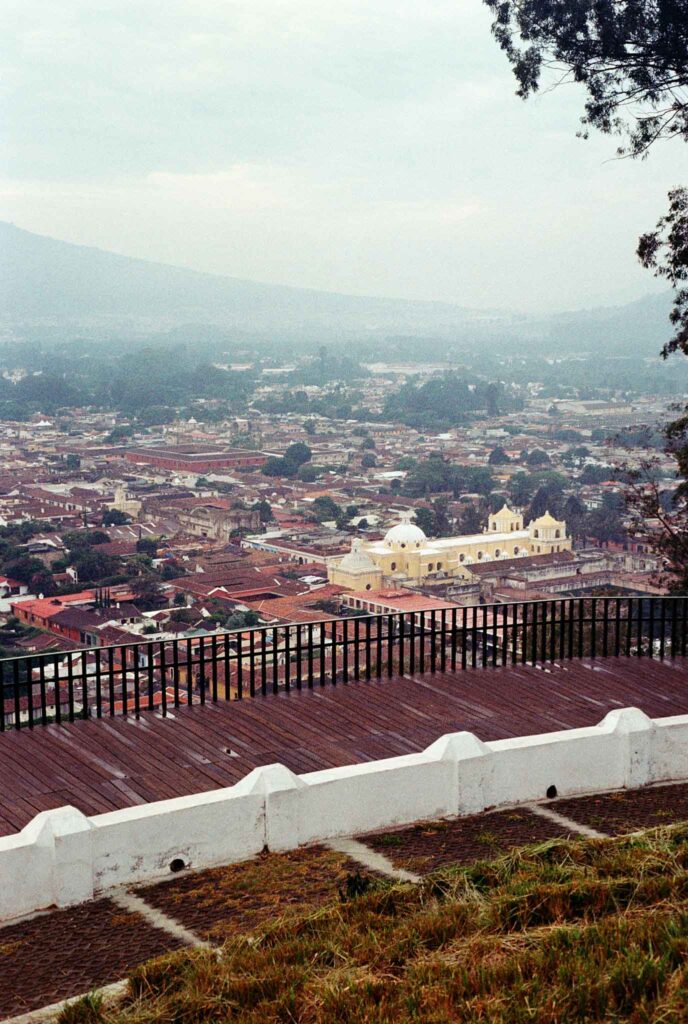
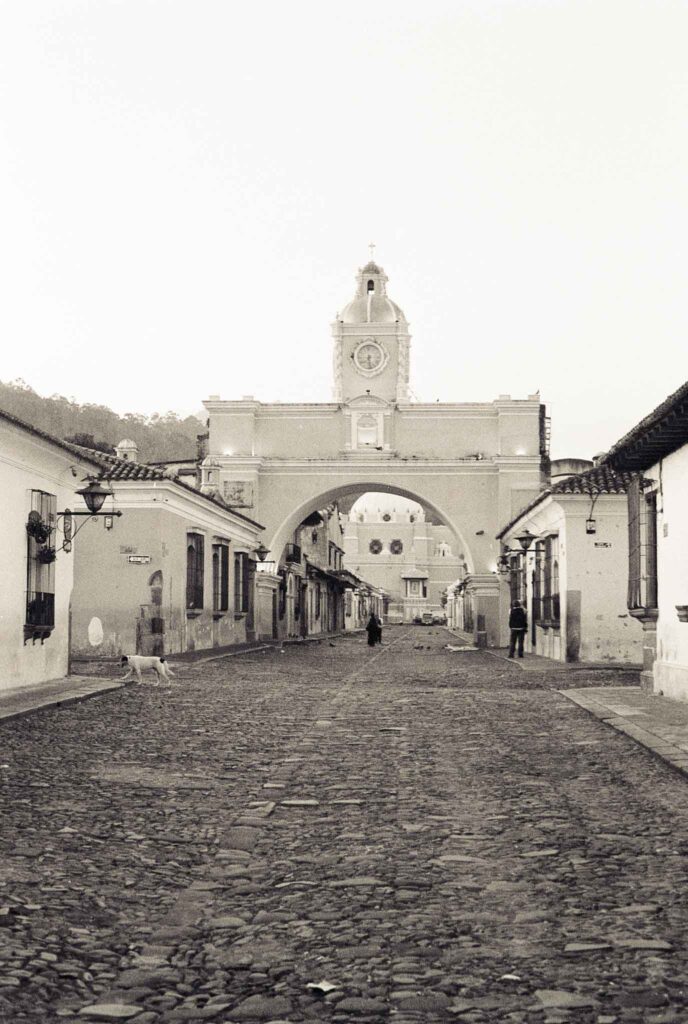
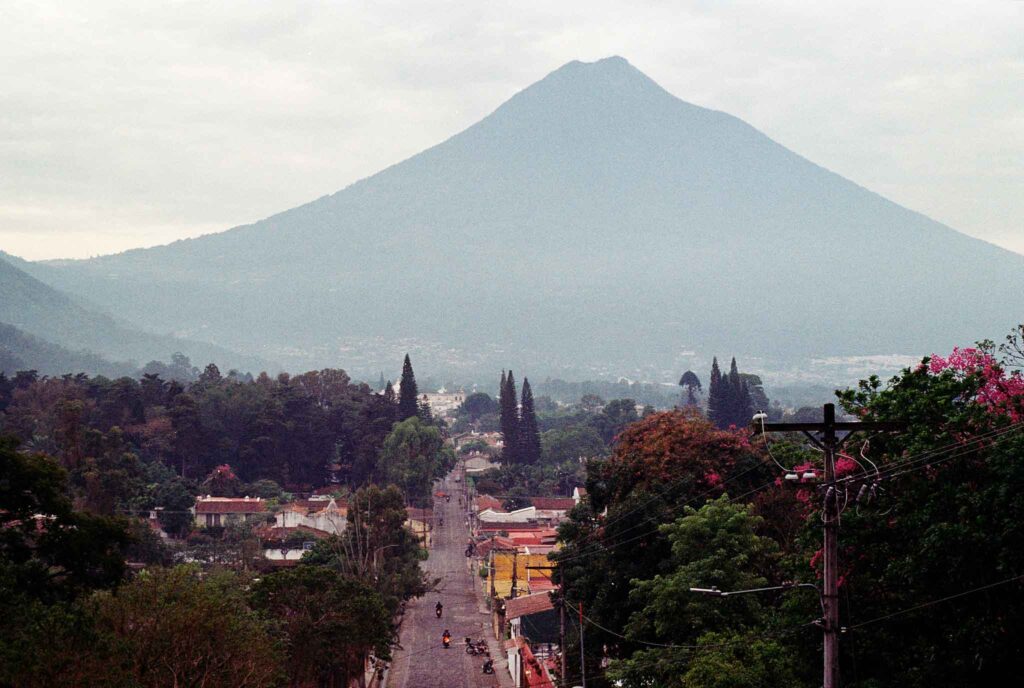
This landscape was taken on Kodak Pro Image 100 and pushed one stop to 200. I believe this was at f/8, thus creating the crisp sharpness and the nice focus across the whole frame. I was nothing short of impressed to see that my camera had captured this when reviewing the film.
People don’t realize that Guatemala is actually a very mountainous country, not to mention its more than thirty volcanoes also dot the map, many of which are still active. I was able to hike the Pacaya Volcano while I was there, which was a surreal experience. Pacaya has not been active for quite a few years, but its neighbor Fuego erupted the day before.
After Antigua, our next stop was Lake Atitlán, one of the deepest lakes in Central America and by far one of the prettiest landscapes I have laid eyes on. Despite being just 76 kilometers away, our drive from Antigua to the main transportation hub of Atitlán, Panajachel, took over two hours. We spent little time in Panajachel and wanted to spend more time in the lesser-trodden village of San Juan La Laguna and San Pedro La Laguna. Our hotel in San Juan offered beautiful vistas of the lake and the surrounding mountains.
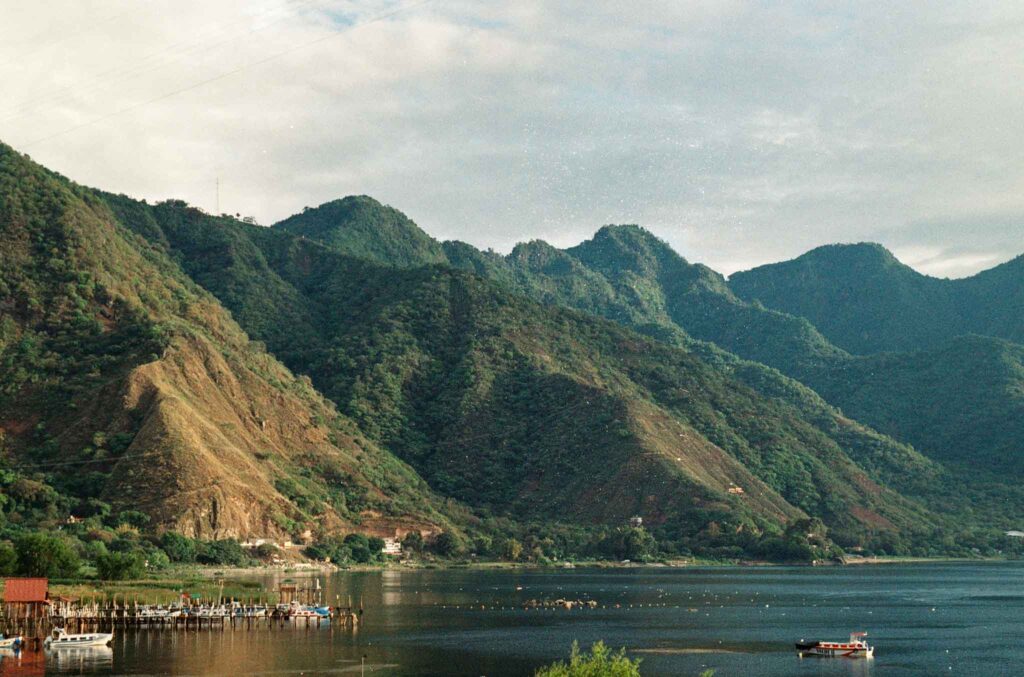
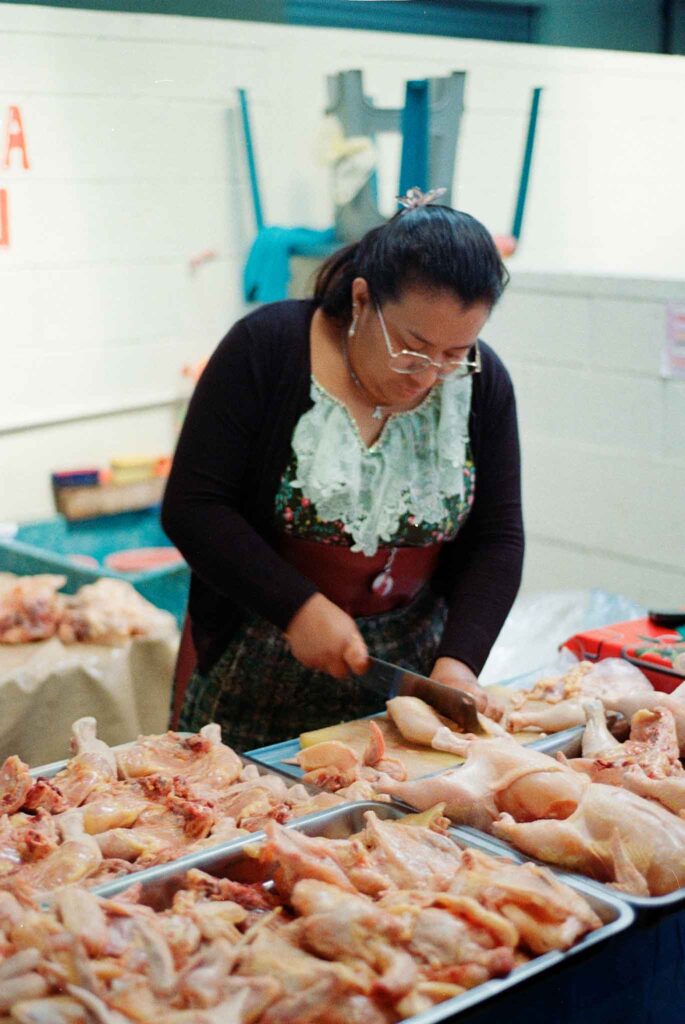
The left photo was the view I woke up to every morning from our hotel. That was something I still was not used to by the time we left. I could see that view every day and never tire of admiring its intricacies, especially contrasted with the adjacent lake, which, as I mentioned, is incredibly deep. One extreme meets the other, and both are right next to each other. According to a local museum in Panajachel, Atitlán was formed by a volcanic crater. The lake has two volcanoes in its immediate vicinity.
I love incidental adventures and learning opportunities when traveling. I was aware of Guatemala’s strong Mayan background, but never did I expect to come face-to-face with it in such an intimate way. Guatemala is known as “el corazón del mundo maya”, or the heart of the Mayan world, and one of our lancha (boat taxi) drivers affectionately told us “bienvenidos al Guatemaya”, or “welcome to Guatemaya.” Not only is that true in the even more far-removed parts of the country, but also in the towns surrounding Atitlán. Guatemala has 22 Mayan ethnic groups, many with their own unique Mayan dialects, and it is estimated that 40-60% of the country’s population speaks a Mayan language. The two main dialects around the lake are Kaqchikel and Tz’utujil, but they are very different from one another. A person could not speak Tz’utujil and understand someone speaking Kaqchikel, or vice-versa. The woman in the image above is cutting chicken in the local market of San Pedro, which we were able to see through a Mayan cooking class we took in the town to learn more about the local gastronomy and agricultural roots of the area. The market was extensive, with numerous sellers of fruits, vegetables, fish, and chicken. The chicken being cut above was slaughtered just hours earlier (we cooked with it and it was delicious!), and the fish being sold throughout the market was also caught recently.
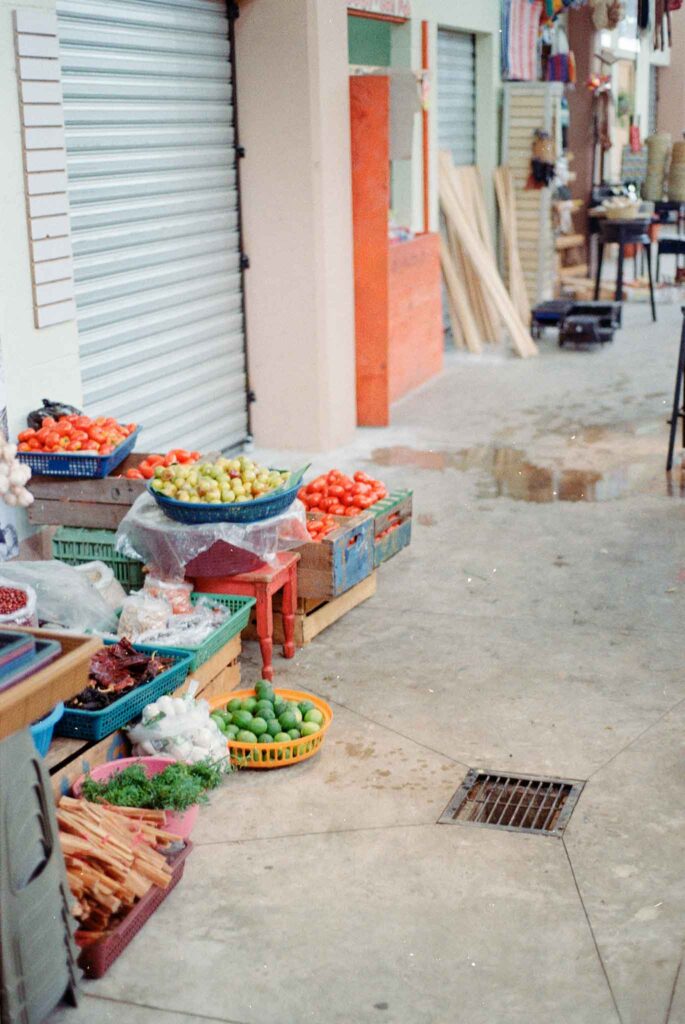
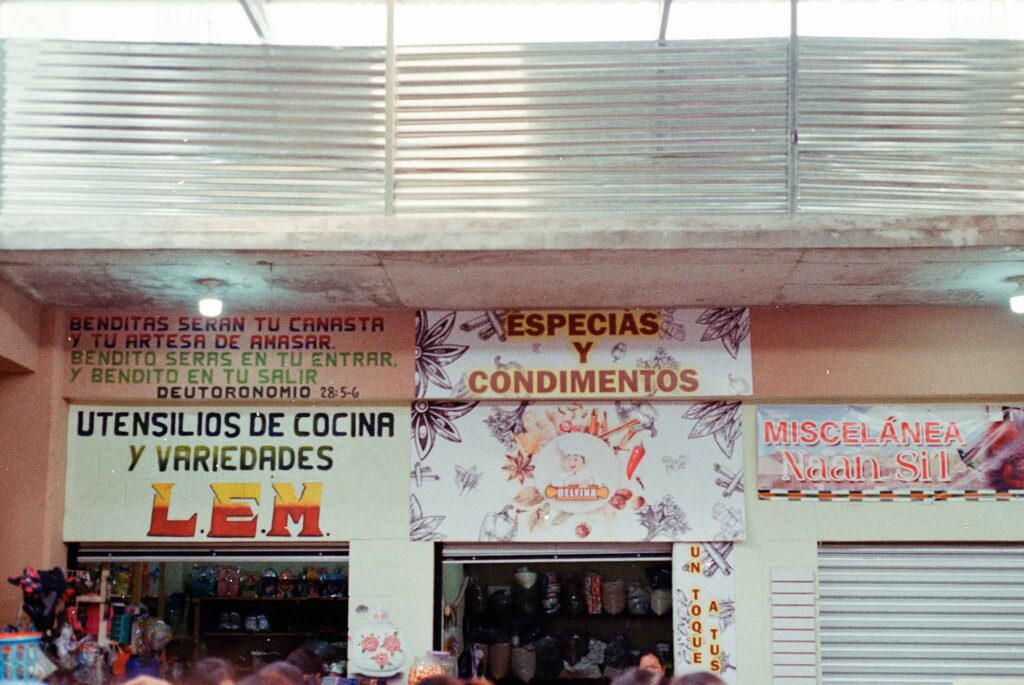
Our cooking class instructor, a local of San Pedro, told us that many of the people go to the market every day to purchase what they need to feed themselves for that day alone, as many people in the area are unable to afford refrigeration. Seeing the means that some people had and hearing this fact made me reflect deeply on the privileges I am entitled to living in the US. Something that is as commonplace as a refrigerator is considered to be luxurious in certain parts of Guatemala, and understanding that makes me think a little more about how blessed I am to have such an appliance.
As our instructor walked through the market, all of her communication was done in Tz’utujil with the vendors. I later asked about the language demographics in the area, and she told me that the majority of the village elders (those in their fifties or so and older) do not speak Spanish, or if they do, it is very little. Many of those individuals did not have the ability to attend schools and learn Spanish. You may also notice the clothing that the vendor is wearing appears to be much different than the typical clothing worn by most females in the US (or, in any major cosmopolitan city in the West for that matter). Our instructor made it a point to tell us that this is not a costume of some kind for the sake of tourism. This is just normal dress. Each piece is handmade and uses fabrics made from local materials, which indicate a person’s origin by location and Mayan ethnic group. Our instructor made it a point to mention to us that the preservation of Mayan heritage through language, cultural expression, and cuisine are extremely important to those living in the towns around Atitlán, from the younger generations and up through the village elders.
My trip to Guatemala was nothing short of amazing. From the perspective of the more mainstream tourist areas in Antigua touched with a colonial Spanish flair to the largely indigenous shores of Lake Atitlán, this small country has much to offer. The people were nothing but accommodating and warm throughout our whole stay, and never once was I concerned for my safety or well-being. For those who like to explore something off the beaten path, Guatemala should be on your list. If you enjoy food, history, and want something relatively undiscovered by much of the world, this country will not disappoint you.
Leave a Reply